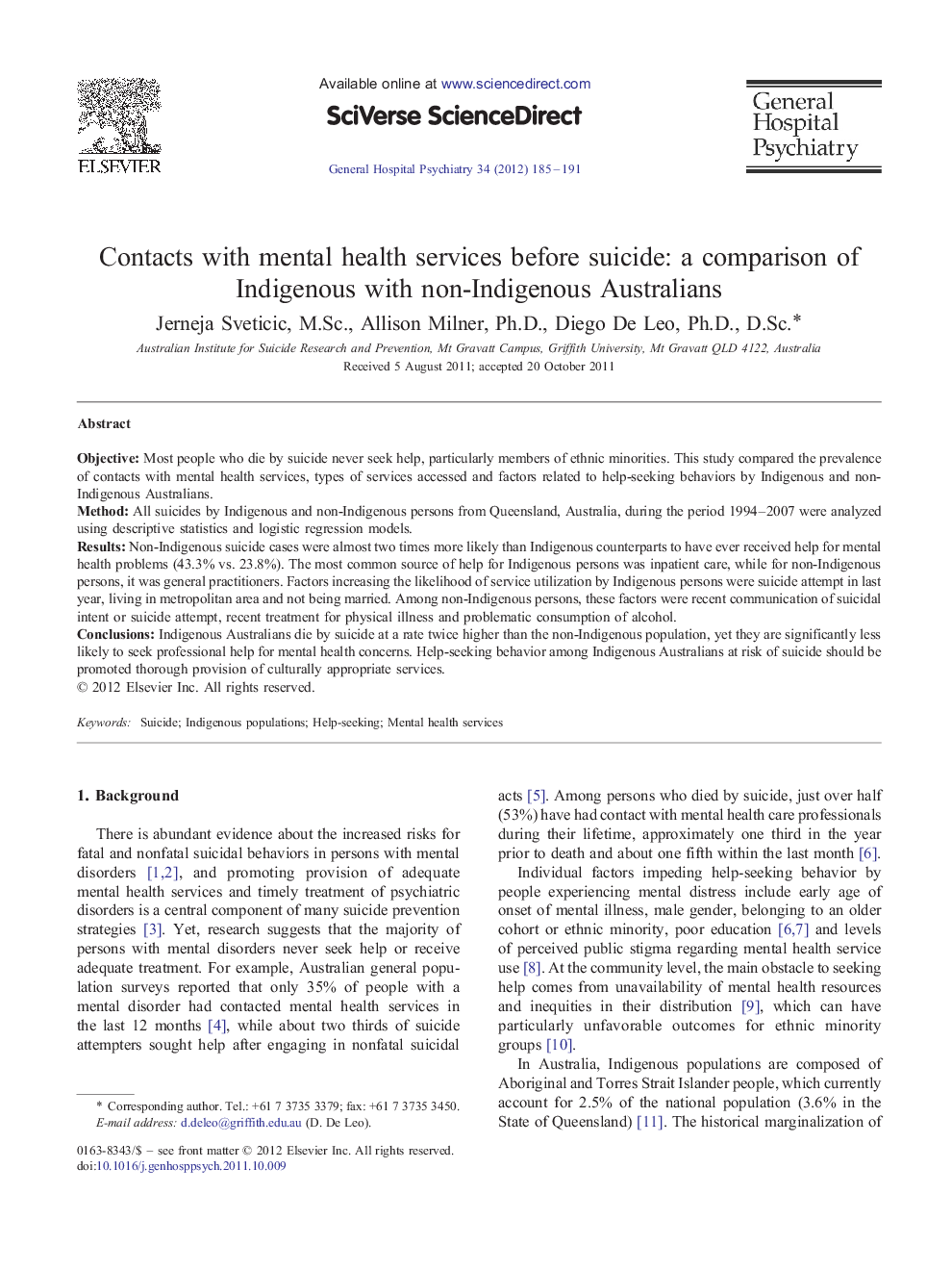| Article ID | Journal | Published Year | Pages | File Type |
|---|---|---|---|---|
| 3238161 | General Hospital Psychiatry | 2012 | 7 Pages |
ObjectiveMost people who die by suicide never seek help, particularly members of ethnic minorities. This study compared the prevalence of contacts with mental health services, types of services accessed and factors related to help-seeking behaviors by Indigenous and non-Indigenous Australians.MethodAll suicides by Indigenous and non-Indigenous persons from Queensland, Australia, during the period 1994–2007 were analyzed using descriptive statistics and logistic regression models.ResultsNon-Indigenous suicide cases were almost two times more likely than Indigenous counterparts to have ever received help for mental health problems (43.3% vs. 23.8%). The most common source of help for Indigenous persons was inpatient care, while for non-Indigenous persons, it was general practitioners. Factors increasing the likelihood of service utilization by Indigenous persons were suicide attempt in last year, living in metropolitan area and not being married. Among non-Indigenous persons, these factors were recent communication of suicidal intent or suicide attempt, recent treatment for physical illness and problematic consumption of alcohol.ConclusionsIndigenous Australians die by suicide at a rate twice higher than the non-Indigenous population, yet they are significantly less likely to seek professional help for mental health concerns. Help-seeking behavior among Indigenous Australians at risk of suicide should be promoted thorough provision of culturally appropriate services.
